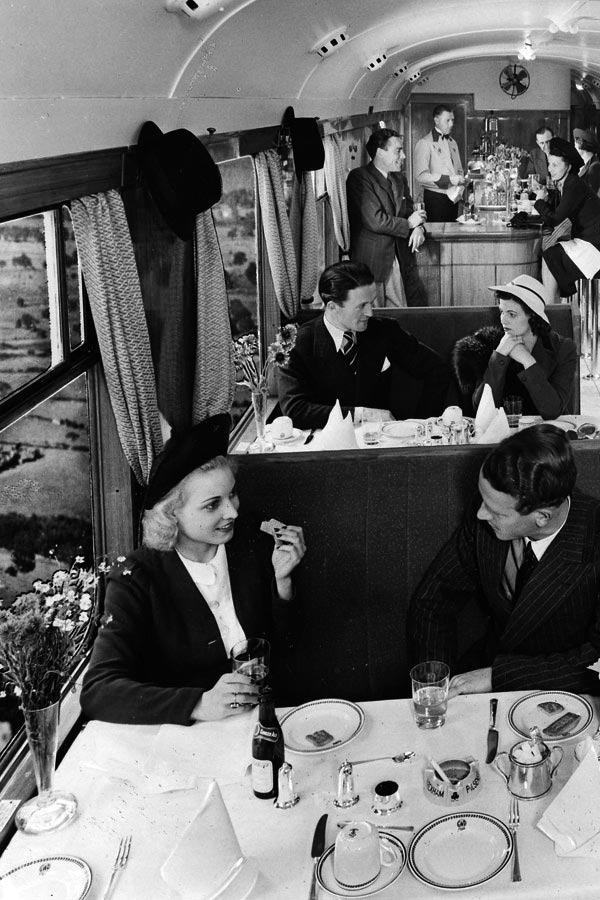History of GWR
In the 1930s the ‘Big Four’ railway companies, GWR, LMS, LNER and SR, dominated Britain’s railways. Undergoing a period of vast modernisation, GWR refurbished their Edwardian and Victorian refreshment rooms to the latest Art Deco style, a look that they would forever be synonymous with.
Always at the cutting-edge of technology and style, GWR started in 1833 with Isambard Kingdom Brunel as its first Chief Engineer. GWR celebrated its centenary in 1935 by refurbishing interiors in the Art Deco style of the day.
As part of the 1930s modernisation, the Great Western Railway also commissioned new rolling stock and rebuilt stations, hotels, goods facilities and other infrastructure. As a result, the company grew to become one of the largest commercial ventures in the world.
By 1923 the network was carrying 170 million passengers and 60 million tons of goods per year. With 108,110 employees the GWR empire stretched from its London Paddington HQ as far as Penzance in Cornwall and north to Liverpool and included ocean-going ships, aeroplanes, some of the country’s finest hotels and major docks in South Wales.
The company also launched the world’s fastest scheduled train service, The Cheltenham Flyer, and created the iconic GWR roundel as part of its Deco-styled rebrand – an element we still feature in the branding for Centenary Lounge.
